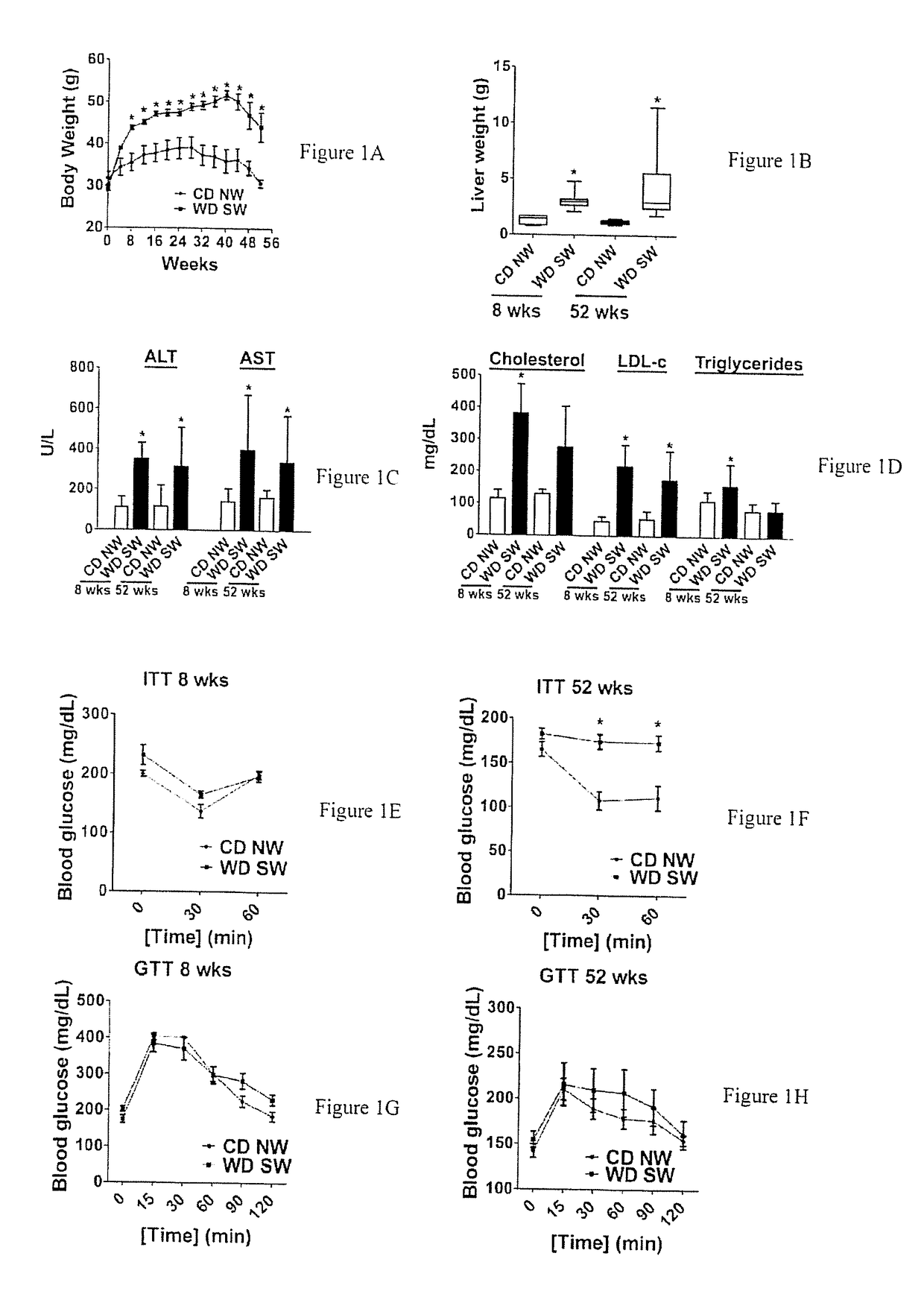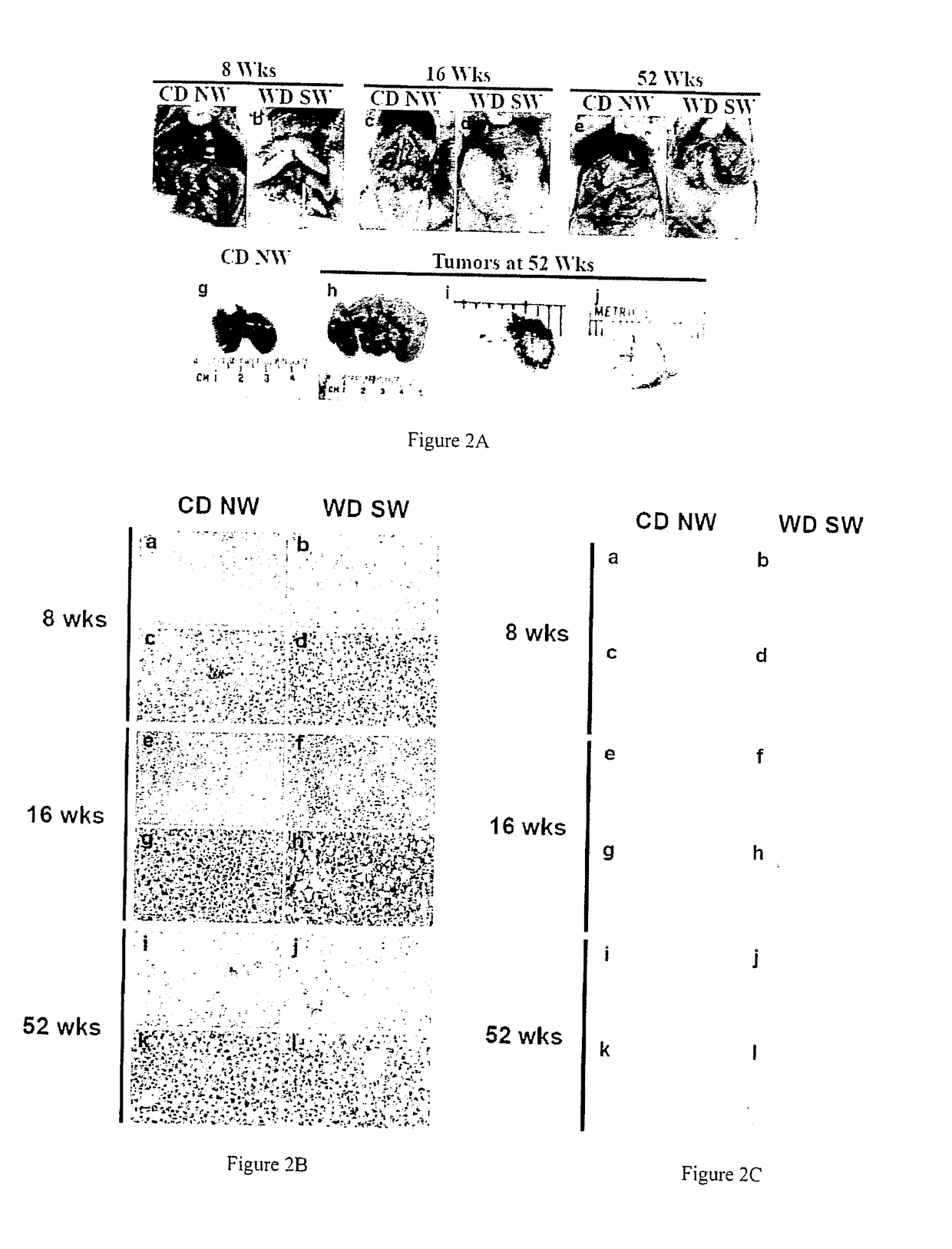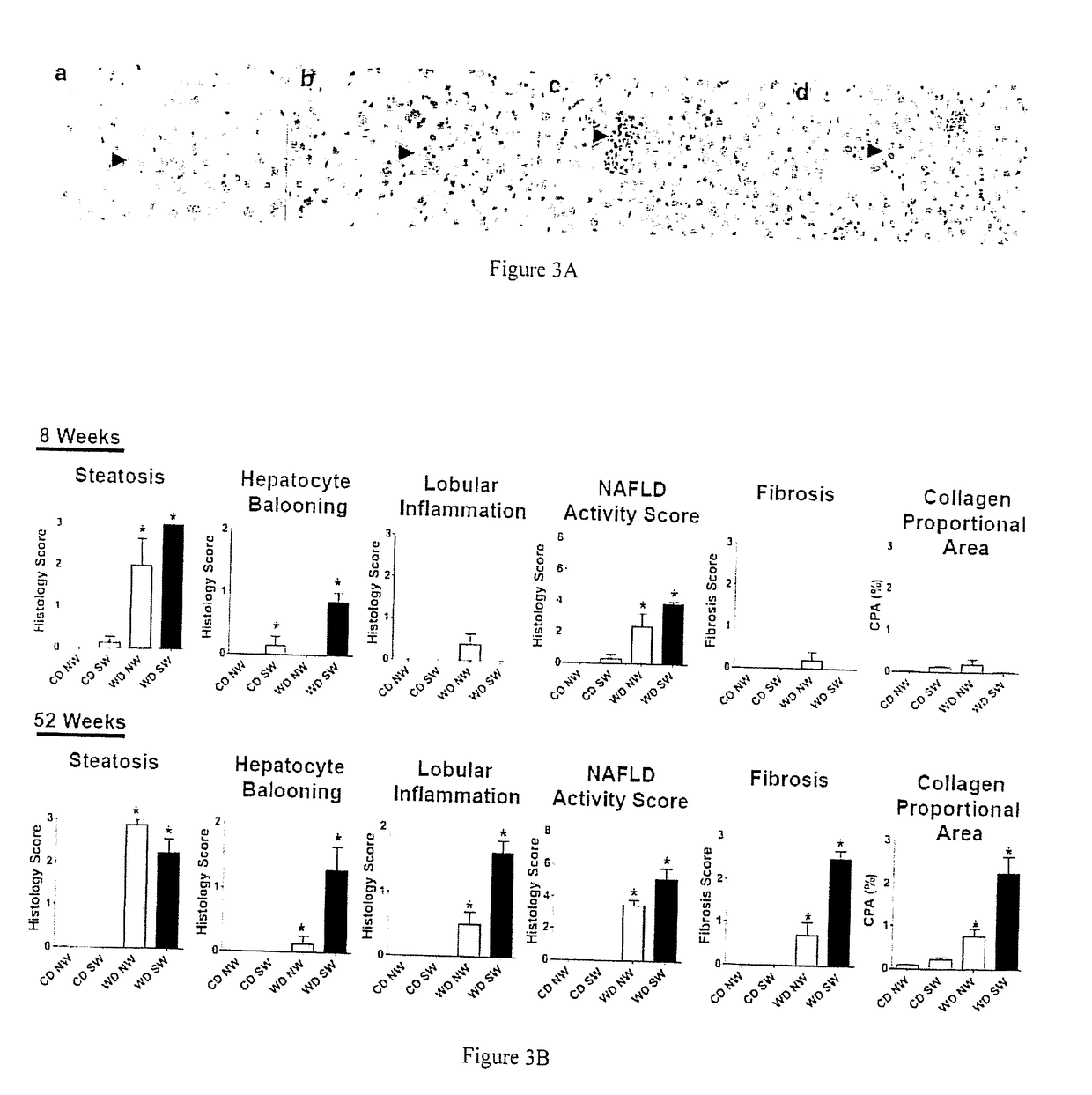A mouse model of nonalcoholic steatohepatitis and uses thereof
- Summary
- Abstract
- Description
- Claims
- Application Information
AI Technical Summary
Benefits of technology
Problems solved by technology
Method used
Image
Examples
example
The Genetic Background of the Mouse:
[0058]Two pure wholly genetically characterized mouse strains were cross-bred. These two parental strains are 129S1 / SvImJ and C57BI / 6J. The progeny that resulted from the cross-breeding are called 129 / B6 mice. The first progeny were heterogeneous (not genetically identical to one another). In order to transform the heterogeneous progeny into an isogenic mouse strain in which all individuals were equally genetically susceptible to developing NAFLD, NASH and HCC in response to Western diet, further selective inbreeding was carried out for over 20 generations to yield the isogenic strain of DIAMOND™ mice that all develop disease pathology in response to dietary trigger. The isogenic status of the mice was confirmed by testing for a set of 158 single nucleotide polymorphisms (SNPs) that included both specific C57BI / 6 and 129S1 SNPs in 6 randomly chosen mice from the colony (Table 1). This SNP testing demonstrated that approximately 60% of the genetic ...
PUM
 Login to View More
Login to View More Abstract
Description
Claims
Application Information
 Login to View More
Login to View More - R&D
- Intellectual Property
- Life Sciences
- Materials
- Tech Scout
- Unparalleled Data Quality
- Higher Quality Content
- 60% Fewer Hallucinations
Browse by: Latest US Patents, China's latest patents, Technical Efficacy Thesaurus, Application Domain, Technology Topic, Popular Technical Reports.
© 2025 PatSnap. All rights reserved.Legal|Privacy policy|Modern Slavery Act Transparency Statement|Sitemap|About US| Contact US: help@patsnap.com



